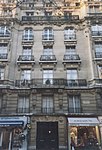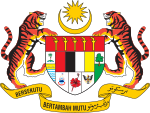Lycée Janson-de-Sailly
1880s establishments in FranceBuildings and structures in the 16th arrondissement of ParisLycée Janson-de-Sailly

Lycée Janson de Sailly is a lycée located in the 16th arrondissement of Paris, France. The lycéens of Janson are called les jansoniens and they usually refer to their high school as Janson, or JdS. It is the biggest academic institution in the region: 3,200 boys and girls from 11 to 20 attend classes ranging from junior high school to Classes Préparatoires.
Excerpt from the Wikipedia article Lycée Janson-de-Sailly (License: CC BY-SA 3.0, Authors, Images).Lycée Janson-de-Sailly
Cour d'honneur, Paris 16th Arrondissement (Paris)
Geographical coordinates (GPS) Address Nearby Places Show on map
Geographical coordinates (GPS)
| Latitude | Longitude |
|---|---|
| N 48.865355555556 ° | E 2.2798888888889 ° |
Address
Administration
Cour d'honneur
75116 Paris, 16th Arrondissement (Paris)
Ile-de-France, France
Open on Google Maps







